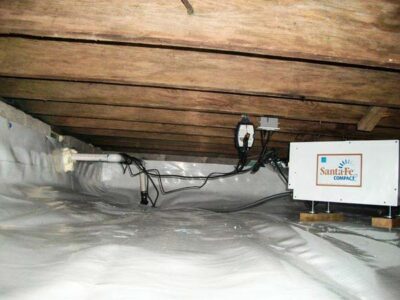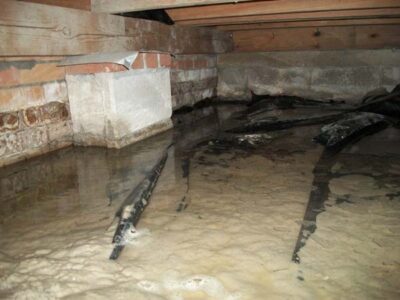Benefits of Crawl Space Encapsulation
Crawl space encapsulation has many benefits for homeowners. Encapsulation keeps a crawl space dry and free of moisture. This helps to prevent mold growth, which can cause health issues such as asthma and allergies. Additionally, an encapsulated crawl space helps to keep out pests such as insects and rodents that may otherwise enter the home.
Beyond health reasons, there are financial benefits to crawl space encapsulation. With a vapor barrier in place, the entire area is better insulated and airtight, allowing it to act as an energy efficient buffer zone between the outside environment and the living area of your home. This could possibly result in significant savings on heating bills over time.
Finally, having an encapsulated crawl space greatly increases the value of your home by providing added protection from potential hazards like pests or moisture damage. This is especially beneficial for homeowners who may eventually be looking to sell their property or make improvements for resale value down the road.
Our Crawl Space Encapsulation Process
Crawl space encapsulation is a process of sealing the vents and then covering the crawl space floor and walls with a vapor-retarding barrier that prevents moisture, pests, and other elements from entering the area.
To begin, a vapor-retarding barrier is installed along the walls and floor of the crawl space. This barrier keeps moisture out while also allowing some air flow. Next, an insulation layer is added to the walls and floors. This insulation helps to regulate temperature within the crawl space. Any exposed pipes and ducts can also be insulated for further protection against cold temperatures. Finally, a dehumidifier may be installed to keep humidity levels in check.
FAQ
Should a crawl space be encapsulated?
Yes, in most cases, a crawl space should be encapsulated. Encapsulating a crawl space can provide many benefits, including increased energy efficiency, improved indoor air quality, and protection from moisture.
How long does crawl space encapsulation last?
Crawl space encapsulation can last for a significant amount of time, depending on the quality of installation and materials used. For example, the vapor-retarding barrier used in crawl space encapsulation can last up to 10 years before needing to be replaced. However, with good maintenance and regular inspections, encapsulation can last even longer. Additionally, using a dehumidifier helps to extend the encapsulation life span as it keeps moisture levels low and prevents mold from growing. With proper care, crawl space encapsulation can help protect your home from humidity and water damage for years to come.
Can mold grow in encapsulated crawl space?
While the vapor-retarding barrier helps prevent mold from growing in an encapsulated crawl space, it’s important to keep the area dry by making sure humidity levels are low. This is why most homeowners add a dehumidifier along with encapsulation.
What is the difference between a vapor barrier and crawl space encapsulation?
A vapor barrier by itself is a layer of material that helps keep moisture out of a crawl space, while crawl space encapsulation involves sealing the walls and floor with a vapor-retarding barrier. In other words, crawl space encapsulation is more comprehensive than just using a vapor barrier alone and provides superior protection against moisture damage.


